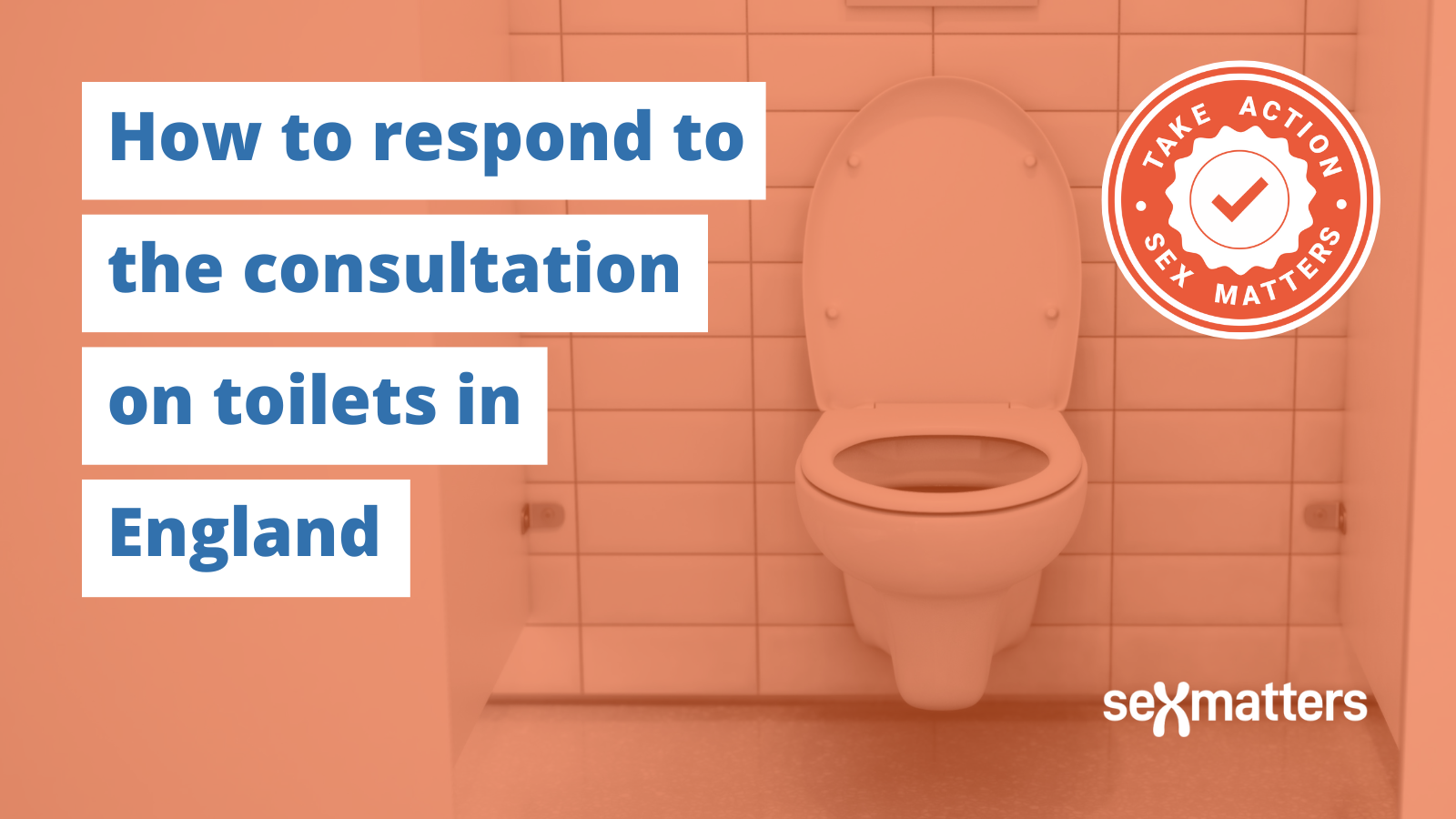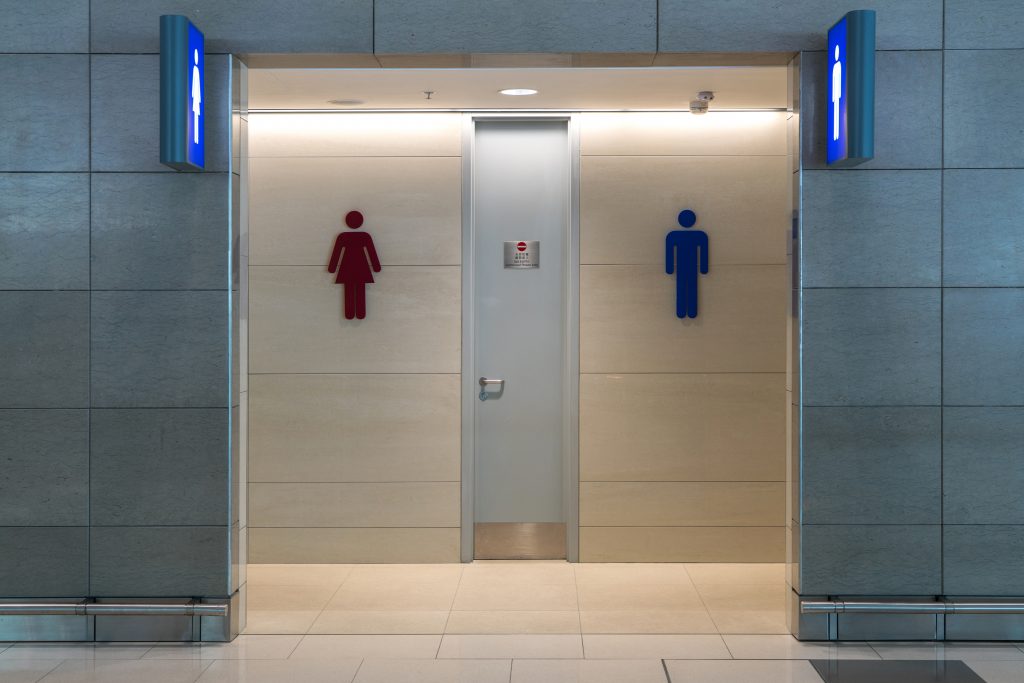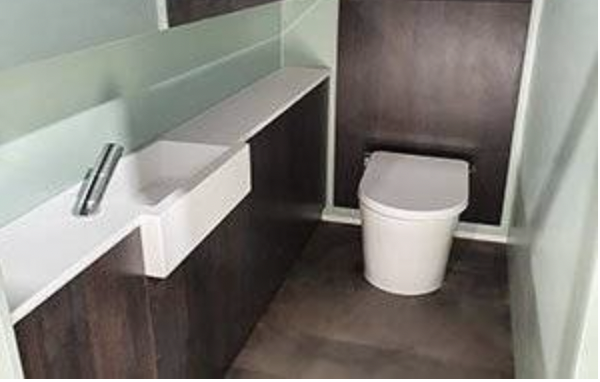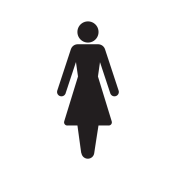Respond to the toilets consultation
Sex Matters’ guidance on how to respond to the government’s toilets consultation.

If you provide or use toilets in public buildings and workplaces in England, please respond to the government’s consultation on its proposed new regulation on toilets by Sunday 8th October using the official online survey.
What is the proposed change?
The Government proposes to amend the Building Regulations 2010 to require “specific types of toilet accommodation” to be provided in new builds and refurbishments (where the building is not a dwelling). Toilets must be separate male and female toilets or fully enclosed “universal” toilets.
The regulations will not apply to schools (which have separate regulations) but will apply to workplaces, universities and colleges, sports buildings and healthcare premises.
The government will also publish a new Approved Document T which provides more detail for building contractors and building owners on how to meet the regulation.
This will sit alongside existing documents M and G which relate to disability access and water and sanitation.
What does Sex Matters think of the proposed new regulation?
Sex Matters agrees with the policy’s intent, which is:
- to amend building regulations and guidance to ensure that separate toilets for men and women continue to be provided
- to encourage the provision of a unisex toilet where space allows
- to make sure that where unisex toilets are provided, privacy is ensured.
This is in addition to existing requirements for unisex wheelchair-accessible toilets.
We welcome the proposed change to the Building Regulations in general, and the introduction of Approved Document T. But think the wording of the Approved Document could be clearer that sex-separated facilities are the preferred option, and should not be replaced by all-unisex options.
What is good about the proposed policy?
It defines:
- single-sex toilet as “a toilet room used only by people of the sex identified at the entrance to the toilet room, with cubicles and handwashing in a shared area used as a single sex space”
- universal toilet as a “fully enclosed toilet room used and entered by an individual with a wash hand basin for individual use within the room, opening on to a supervised corridor or circulation space”.


This should put an end to the trend of installing “gender neutral” toilet facilities where men and women have to share a common handwashing space, or where the washbasins are inside the cubicles/toilet rooms but the mixed-sex circulation space between them is isolated or enclosed. We know that these situations feel uncomfortable to many people, and unsafe to many women (see our single-sex services survey).
The policy intent and the guidance also include reference to signage (and the internationally standardised signage symbols). This is important because providing toilets that protect privacy and dignity is not only about the physical construction of spaces but also clear communication about who can use which space.



What could be better about the proposed policy?
We think the approved document could be clearer in explaining that separate male and female toilets are the preferred option, and that universal toilets should be provided in addition, if space allows.
To do this the Approved Document could provide a specific numeric threshold to make clear that, while it is appropriate to have only unisex toilets in situations where there are one or two toilets, in situations where there are more toilets these should include separate-sex facilities and not be replaced by universal toilets for all.
What about the equality-impact assessment?
The government has published an initial summary equality-impact assessment (EIA), and responses to the consultation are being used to develop the full EIA.
In relation to the protected characteristic of gender reassignment, the draft EIA states that two of the notable themes in the responses to the call for evidence were:
- that people with the gender-reassignment characteristic should be able to use the toilet of their choice and have access to a non-gendered toilet.
- that some people with the gender-reassignment characteristic cannot, or are fearful of, participating fully in public life because of the potential of verbal or physical assault while using toilet facilities or the anxiety about using spaces not designed for their gender identity.
The EIA does not mention feedback from women who raised the issue of trans-identifying men using women’s toilets making women feel uncomfortable and unsafe.
The version of the EIA on the website says:
“For people with the protected characteristic of Gender Reassignment who may not wish to use the relevant single sex facility that aligns with their sex, the provision of universal toilets as described in the guidance is a reasonable arrangement that offers more space and greater privacy.”
But the version in the online survey omits this and states:
“It should be noted that the proposed policy will not encourage or discourage the use of any type of toilet based on any protected characteristic.”
We think the policy-makers should be clear and honest about the intention and impact of providing clearly defined and signposted single-sex toilets and unisex toilets. Clear signs are intended to discourage people from trying to use which are not inappropriate for them – that is male people seeking to use the women’s toilets and female people seeking to use the men’s.
While this may frustrate people with the protected characteristic of gender reassignment, it does not deny them overall access to toilet facilities, since universal facilities are also provided.
Building regulations cannot deal with the day-to-day management of facilities, but the EIA should recognise that the intention of the policy is that there will be clear male, female and unisex options, and that these accommodate the need of everyone to use the toilet in privacy and dignity, but not the desire of some people to use opposite-sex facilities. This is neither unlawful sex discrimination nor unlawful gender-reassignment discrimination under the Equality Act 2010.
How can you respond to the survey?
Sex Matters will be putting in our own response to the consultation.
We think it would also be particularly helpful if people can respond:
- if they have practical experience of managing relevant spaces as tenants or landlords – for example, gym and sport centre managers, publicans and others in the hospitality industry, managers of charities which serve the public and employers of all sizes
- if they have experiences and knowledge in relation to particular protected characteristics.
You can reply as an individual or on behalf of an organisation. You could give evidence based on:
- your personal experience of using toilets with different designs and rules
- your experience of managing sites
- feedback from employees and service users about separate-sex and unisex toilets
- experience of managing in relation to safety and discouraging opportunistic sexual harassment (exposure and voyeurism)
- managing conflict and uncertainty when people try to use opposite-sex facilities
- confusion and uncertainty between landlords, tenants, building managers and service users about what separate-sex facilities are
- knowledge about the needs and concerns of people with particular protected characteristics.
You do not have to answer all the questions in order to submit a response. Do not submit indecent, obscene or offensive material including images or videos.
Please note that the government may publish responses or be required to disclose them under freedom-of-information laws. If you want the information that you provide to be treated as confidential, you can write to the department to explain why at [email protected]
If you do not want your business or organisation to be publicly identifiable, you could respond as an individual giving your initial and surname but explain that you are providing evidence that reflects your professional experience.
Suggestions on how to answer the questions
You don’t need to answer all the questions. We have suggested key questions to answer.
| Number | Question | Suggested answer | Comments |
|---|---|---|---|
| 5 | Do you support the government’s intent to ensure provision of single-sex and/or universal toilet accommodation for building works in buildings other than dwellings? | YES | Explain why single-sex facilities are important in your experience, and why exclusively unisex facilities are not adequate, even where they are fully enclosed. If you are answering as a service provider you could also write about the need for clarity in requirements and provisions between builders, landlords, tenants, site managers and users. |
| 6 | Do you agree with the new functional requirement (T1) proposed? | YES | You may want to say that the Approved Document should make clear that separate male and female toilets should generally be provided, and should not be entirely replaced by universal toilets. |
| 10 | Do you agree with the Secretary of State’s intention for separate single-sex toilet facilities? | YES | Here again is a chance to say why clear single-sex facilities are important, in your particular experience. |
| 11 | Do you agree with the intention to include signs showing facilities are provided for men and women? | YES | Here you might want to give any evidence or experience you have of the importance of clear signage, or of conflicts over who can use particular toilets. |
| 12 | Do you agree with the intention to provide universal toilets where space allows? | YES | Here you may want to give examples or experience of why providing a unisex option in addition to single-sex toilets is helpful. |
| 15 | Should a specific numeric threshold apply to the four toilet types? | YES | Here is where to make the point that the Approved Document should recommend that in locations with more than one or two toilets, separate-sex facilities for men and women are provided as standard. |
| 19 | Do you agree with the impacts presented in our equality-impact assessment? | NO | Here is the place to comment from your specific experience about why clearly signed single-sex toilets are important for you or the groups you serve or represent on the basis of the protected characteristics of sex, age, disability, and religion or belief. You can make the point that the benefits of clearly signed single-sex services are destroyed if people are told that they can choose to use opposite-sex facilities, or if the rules are ambiguous. Put details in this section If you have specific experience of the negative impact on people with protected characteristics (such as sex, age, disability, and religion or belief) of people using opposite-sex facilities, seeking to use them, or organisations having policies that say they are allowed to use them. |
